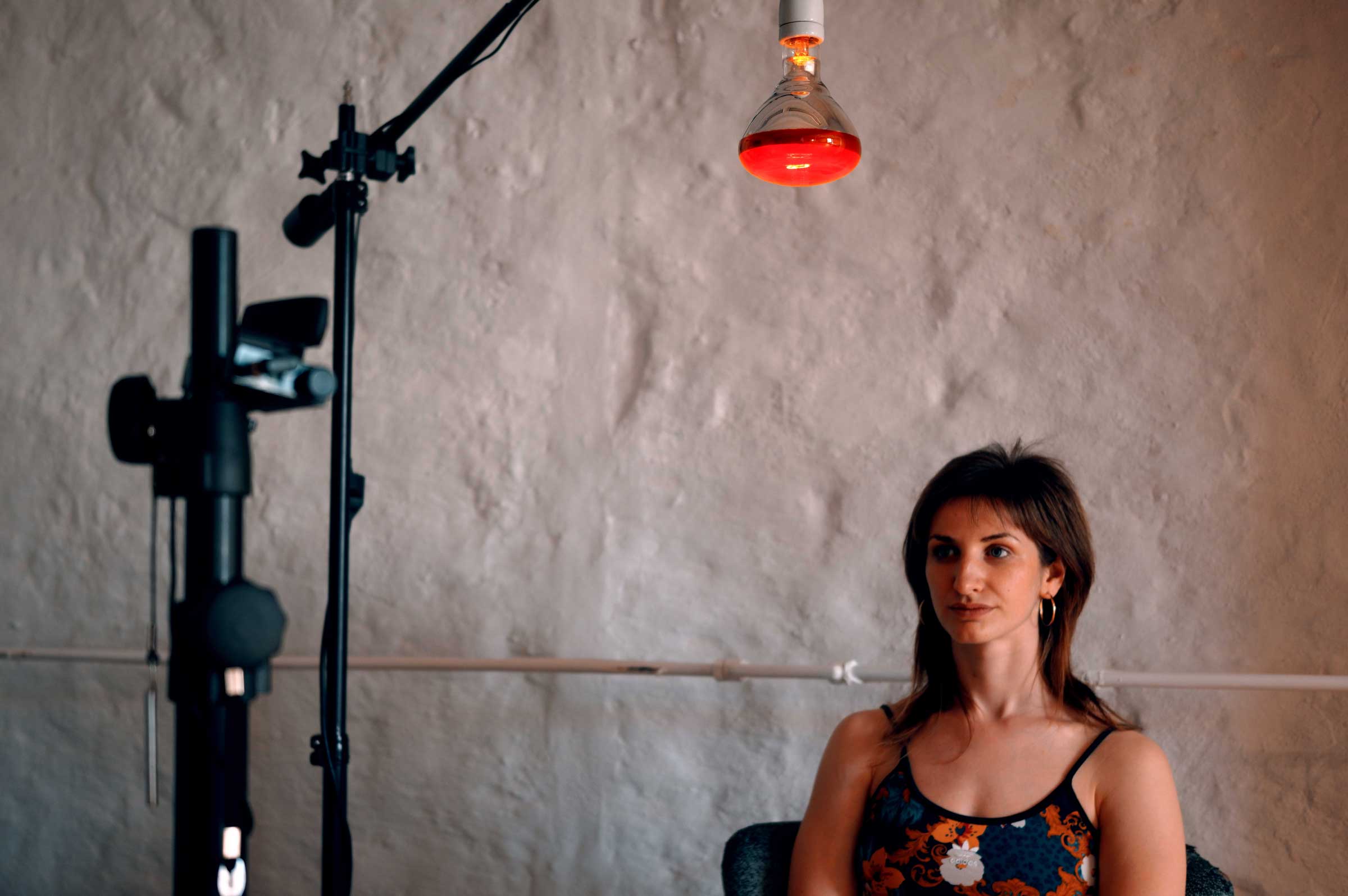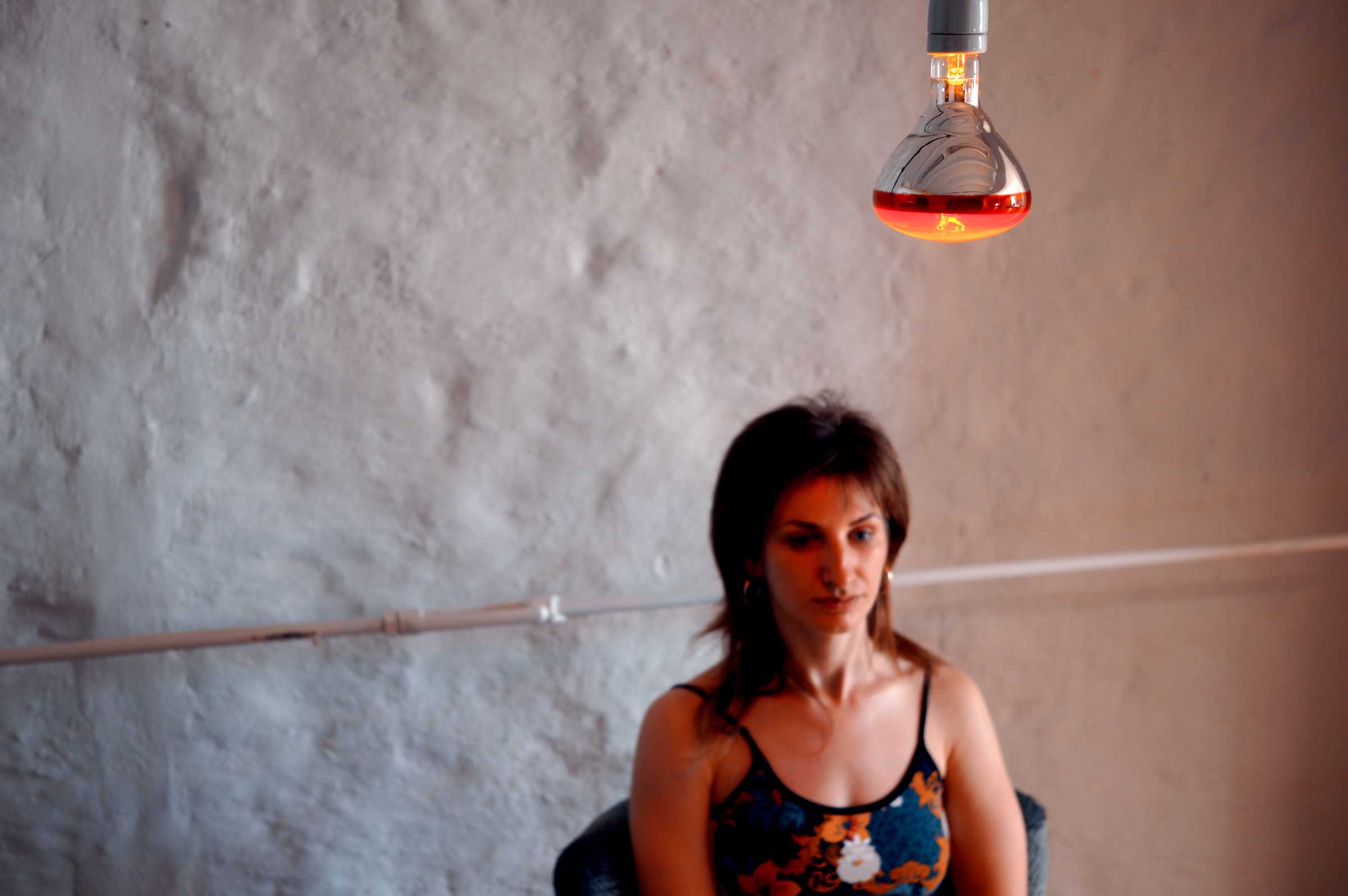come on baby light my fire
2023.
"Come on baby light my fire" is an installation that deconstructs internet interaction through a live video chatting platform, transforming it into a tangible experience, employing an infrared heat lamp and an embodied sound chair(chair with a built-in speaker) to symbolise the presence of "the other person”. To achieve this, a deep learning object detection model is utilised to recognise several categories (face, t-shirt, male and female genitalia, and breasts) on the popular site for random anonymous video interaction, omegle.com, commonly associated with exhibitionism and sexualised content. The system translates the values assigned to these categories into heat and red light, signalising the presence of nudity as highest, contrary to the lowest heat of the shirt.

Participants, while sitting in the chair and hearing the explanation of the work, suddenly feel discomfort when they realise the situation they are in: being exposed to someone without seeing them. This opens up a possibility of the subversion of the gaze, as the participant is being surveilled but has control of the actions in front of the web camera, even though he cannot see the person interacting with. Including the speaker in the chair opens up a potential for communication between participants, considering the person on the online platform as part of the process. In such way interaction is achieved excluding the visual component of the platform. By confronting the complexities of virtual connections, the installation provokes questions about the roles of design, technology, and societal norms within digital interactions. In this way, the work demonstrates the spirit of re-coding, altering the conventional interaction paradigm, encouraging audience to challenge the established habits and engage with technology in an unusual manner.

Through this experiment, I criticise the instant connections formed in contemporary society based on looks, social media, dating apps, and instant gratification. With (in)voluntary participation I examine these occurrences, putting subjects into situations of discomfort while anticipating their reaction, simultaneously speculating a creation of a pseudo safe-space with the possibility of forming seemingly deeper connections. Translating the digital interaction into a heat agency, the work tries to caricature the potential of artificial love as a substitute for the idealised romance presented by the mainstream media.

The installation is made in collaboration with colleague Julia Vollmer(1995), who assisted creating the object detection model used for analysing the video-chat stream. Photographed by Hsun Hsiang Hsu.